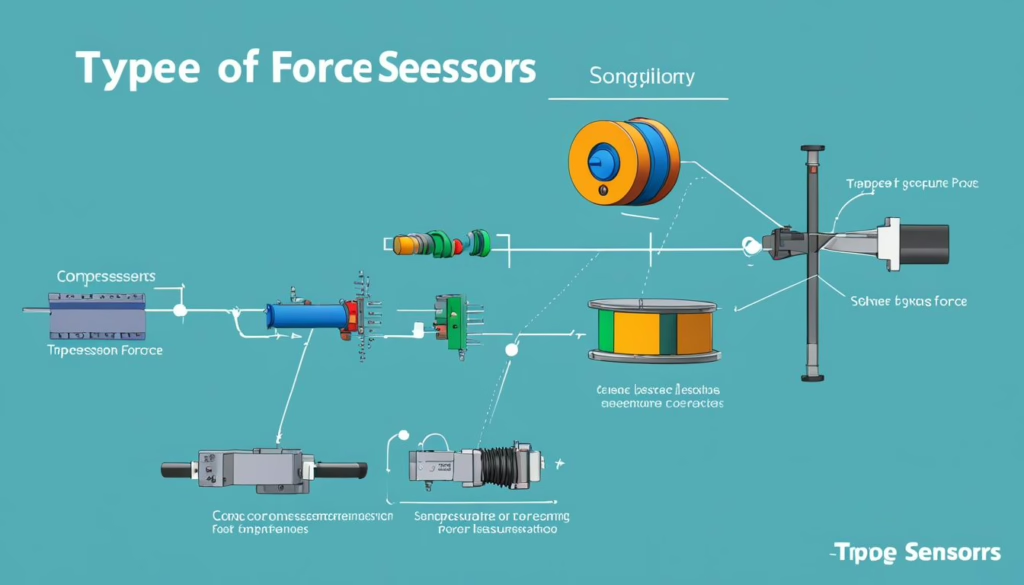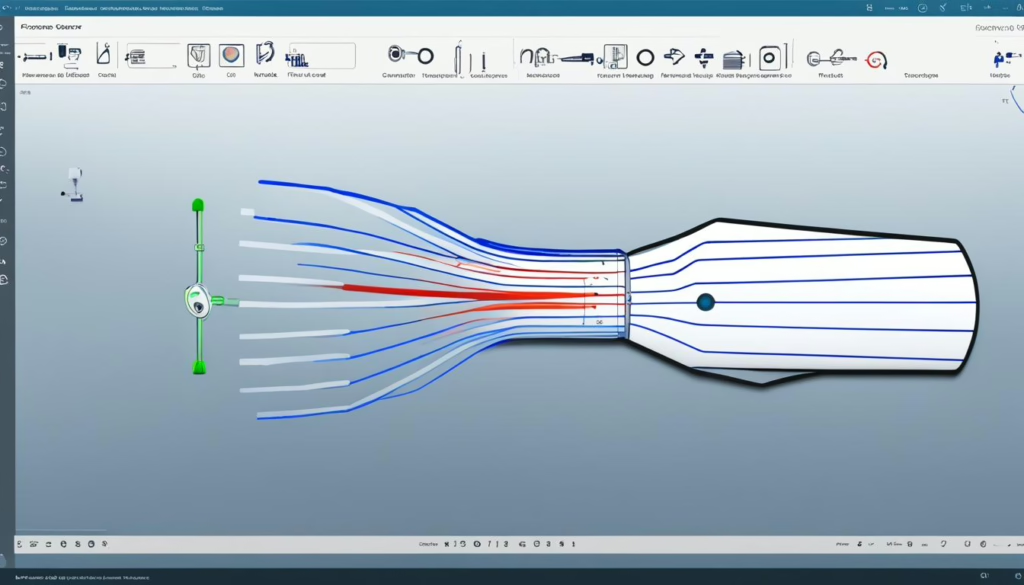Force sensors are key in the world of tech. They are crucial for measuring force accurately. But what is force sensor? It is a device that checks the force or pressure applied. Such sensors are used in everything from big machines to everyday gadgets. They ensure these systems work well and stay safe.
Force sensors need to be very accurate and reliable. For example, in robots, they must work perfectly to keep things smooth. They are important in fields like manufacturing, health, and flying. In these areas, knowing the exact force applied is key for the best results.
Key Takeaways
- Force sensors measure applied pressure with high accuracy.
- They play a vital role in various applications, including industrial and consumer electronics.
- Ensuring safety and functionality, precision in force sensor technology is paramount.
- Utilized in industries such as manufacturing, healthcare, and aerospace.
- Reliable force sensors enhance the efficiency of automated and robotic systems.
What is Force Sensor
A force sensor is a device that changes applied force into electrical output. This change is key for measuring force properly. Understanding this force is essential in many settings, showing how important these sensors are.
Force sensors are used where accuracy matters a lot. They are found in machines and gadgets we use every day. Force sensor accuracy is very important. Even small mistakes can cause big problems in how we understand data.
Below is a comparative table that illustrates key criteria and comparison between various force sensors used in today’s technology:
| Type of Sensor | Application | Force Sensor Accuracy |
|---|---|---|
| Strain Gauge | Load Cells | High |
| Piezoelectric | Dynamic Force Measurement | Very High |
| Capacitive | Touch Sensing | Moderate |
| Magnetic | Proximity Sensing | High |
The accuracy of a force sensor affects how well it works. That’s why technology in this area keeps improving. Advancements help make sensors more accurate. This helps create devices we depend on every day more reliable and efficient.
Understanding Force Sensor Technology
Force sensor technology includes many devices that measure force. They turn physical pressure into electrical signals. Each force measurement device’s design is key to ensuring accuracy and reliability. These are used in everything from industrial machines to biomedical tools.
Force Measurement Device
A force measurement device has sensitive parts made of strong materials, like aerospace-grade alloys. It uses strain gauge technology to notice tiny shape changes when force is applied. This change becomes an electrical signal. This method is highly accurate, which is crucial in fields that need precise measurements.
Types of Force Sensors
Strain gauge, piezoelectric, and capacitive models are popular types of force sensors. Strain gauge sensors are known for their high sensitivity and strong build. Piezoelectric sensors are great for measuring quick force changes because they respond fast. Capacitive sensors are used for precise force details. Each type is best for certain jobs, ensuring great results in various settings.
Force Transducer
A force transducer changes mechanical force into an electrical signal. This can then be measured. Force transducers are often called force sensors. They give accurate force readings which are crucial for monitoring in many applications. They help avoid measurement mistakes with proper calibration. This ensures they work well over time.
Experts like FUTEK say regular recalibration is crucial. It keeps the device accurate and helps it last longer.
How Force Sensing Technology Works
Force sensors work by deforming elastic materials and then changing this into electrical signals. When force makes these materials deform, it’s turned into an electrical output that can be measured. This concept is key across various force sensor types and supports the force sensing technology used today.
Force Sensor Working Principle
The heart of force sensor technology is turning physical pressure into data we can understand. This happens through things like strain gauges, piezoelectric elements, and capacitive methods. For example, strain gauges make their electrical resistance change when they’re squished. This changes the signal to measure how much force applied. This mix of material science and engineering makes force sensors more accurate for lots of uses.
Applications of Force Sensors
Force sensors are crucial in many areas, touching lots of industries. They make cars safer and industrial machines more precise. In healthcare, they help care for patients with exact measurements. And in gadgets, they make touchscreens responsive. Force sensing technology boosts the safety and performance of these systems greatly.
Force Sensor Calibration
For sensors to measure correctly, they need careful calibration. This means setting the sensor with known standards to keep its readings right and steady. Calibration often uses known forces to adjust the sensor’s output to what it should be. Staying accurate over time means sensors must be calibrated often. This is crucial for reliable data in all important uses of force sensors.
In summary, force sensor tech plays a big part in many fields. It helps push forward progress and make things more efficient in different ways.
Conclusion
Force sensor tech has grown a lot, giving us great precision in many industries. They are key in the automotive, medical, aerospace, and consumer electronics fields. Technologies like load cells, strain gauges, piezoelectric, and capacitive sensors make things more efficient, safe, and accurate.
One big benefit of these sensors is their accuracy and how they can adapt. They help make systems we rely on more trustworthy and quick to respond. This tech boosts many everyday uses in all sorts of areas, making things work better and more reliably.
These sensors will become even more crucial in the future. They’re proving to be vital for tech progress. To learn more about how they work and what they do, click here. Realizing how important force sensors are shows just how much this tech has improved. It’s changing how we make things both efficient and safe.



